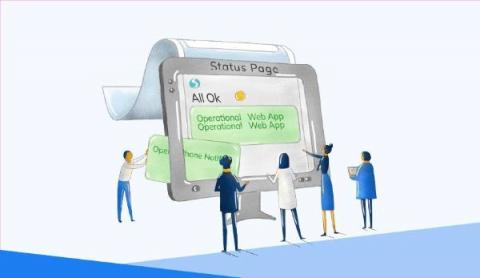Operations | Monitoring | ITSM | DevOps | Cloud
Incident Management
The latest News and Information on Incident Management, On-Call, Incident Response and related technologies.
PagerDuty AIOps for Major Incident Management Teams
Failure Fridays at PagerDuty
The DevSecOps Toolchain: Vulnerability Scanning, Security as Code, DAST & More
DevSecOps is a philosophy that integrates security practices within the DevOps process. DevSecOps involves creating a ‘security as code’ culture with ongoing, flexible collaboration between release engineers and security teams. The main aim of DevSecOps is to make everyone accountable for security in the process of delivering high-quality, secure applications. This culture promotes shorter, more controlled iterations, making it easier to spot code defects and tackle security issues.
The Medium is the Message: How to Master the Most Essential Incident Communication Channels
We’ve all seen it: a company experiencing a major incident and going radio silent, leaving their customers to wonder “Are they doing something about this?!”. If you’ve ever been on the inside of something like this, you know the answer is most likely yes, there are people working hard to put out the fire as quickly as possible. But when it comes to incidents, perception is reality for customers.
Looking Beyond Atlassian StatusPage: The 5 Best Alternatives
Custom fields: make FireHydrant your personalized incident management platform
Today we're releasing custom fields, a powerful new feature that empowers you to tailor FireHydrant to your organization's specific needs and capture essential incident details. Custom fields help you track critical states, involved parties, resolution specifics, affected services, messages, and more — almost anything you want! — all aligned with your unique workflows. Regardless of the size of your team or the maturity of your processes, custom fields adapt to your workflow.
AIOps and Dell's latest acquisition
Dell’s recent acquisition of Moogsoft is the most recent validation of the growing market for automated ITOps – also known as AIOps. When legacy companies such as Dell recognize the importance of AIOps it proves the technologies behind automating ITOps are now mainstream and a vital part of every modern IT management stack. We look forward to seeing how Moogsoft’s integration into Dell will play out over the coming years.
In review: Gartner Hype Cycle for Monitoring and Observability
You know it’s going to be a great day when you find yourself mentioned as a sample vendor on the well-read Gartner’s Hype Cycle report. The OnPage team is thrilled to share with its community that we have been mentioned as a sample vendor by Gartner on their latest Hype Cycle for Monitoring and Observability. Continuing its impressive streak of mentions this year, OnPage is featured as a sample vendor, specifically within the Automated Incident Response category.
Latest Developments in Monitoring and Observability, 2023
You know it’s going to be a great day when you find yourself mentioned as a Sample Vendor on the Gartner® Hype Cycle™ report for Monitoring and Observability, 2023(July 2023). The OnPage team is thrilled to share with its community that we have been mentioned as a Sample Vendor by Gartner on their latest Hype Cycle for Monitoring and Observability. OnPage is recognized as a Sample Vendor, specifically within the Automated Incident Response category.









